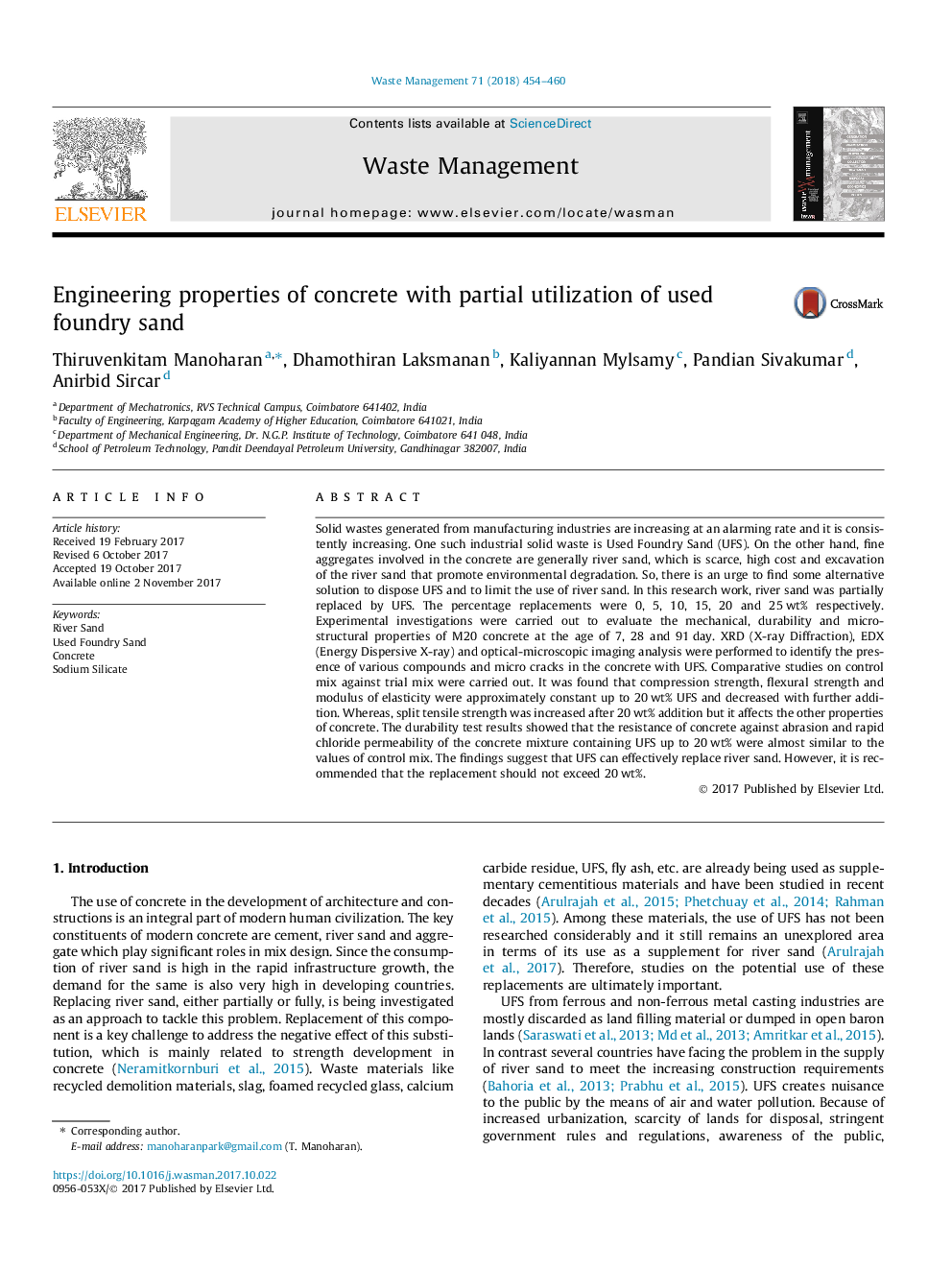| Article ID | Journal | Published Year | Pages | File Type |
|---|---|---|---|---|
| 8870282 | Waste Management | 2018 | 7 Pages |
Abstract
Solid wastes generated from manufacturing industries are increasing at an alarming rate and it is consistently increasing. One such industrial solid waste is Used Foundry Sand (UFS). On the other hand, fine aggregates involved in the concrete are generally river sand, which is scarce, high cost and excavation of the river sand that promote environmental degradation. So, there is an urge to find some alternative solution to dispose UFS and to limit the use of river sand. In this research work, river sand was partially replaced by UFS. The percentage replacements were 0, 5, 10, 15, 20 and 25â¯wt% respectively. Experimental investigations were carried out to evaluate the mechanical, durability and micro-structural properties of M20 concrete at the age of 7, 28 and 91â¯day. XRD (X-ray Diffraction), EDX (Energy Dispersive X-ray) and optical-microscopic imaging analysis were performed to identify the presence of various compounds and micro cracks in the concrete with UFS. Comparative studies on control mix against trial mix were carried out. It was found that compression strength, flexural strength and modulus of elasticity were approximately constant up to 20â¯wt% UFS and decreased with further addition. Whereas, split tensile strength was increased after 20â¯wt% addition but it affects the other properties of concrete. The durability test results showed that the resistance of concrete against abrasion and rapid chloride permeability of the concrete mixture containing UFS up to 20â¯wt% were almost similar to the values of control mix. The findings suggest that UFS can effectively replace river sand. However, it is recommended that the replacement should not exceed 20â¯wt%.
Keywords
Related Topics
Physical Sciences and Engineering
Earth and Planetary Sciences
Geotechnical Engineering and Engineering Geology
Authors
Thiruvenkitam Manoharan, Dhamothiran Laksmanan, Kaliyannan Mylsamy, Pandian Sivakumar, Anirbid Sircar,
